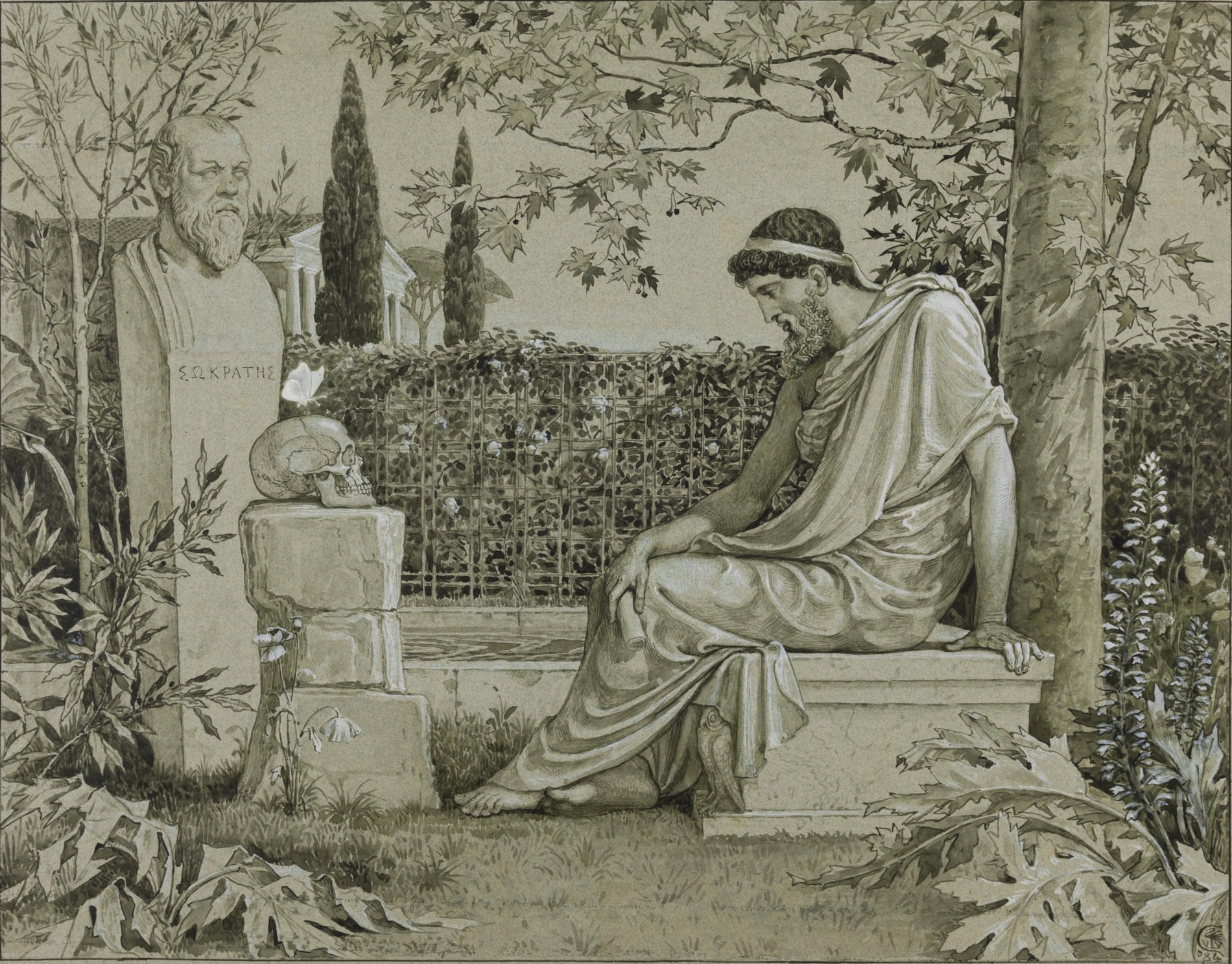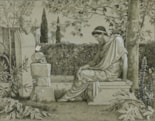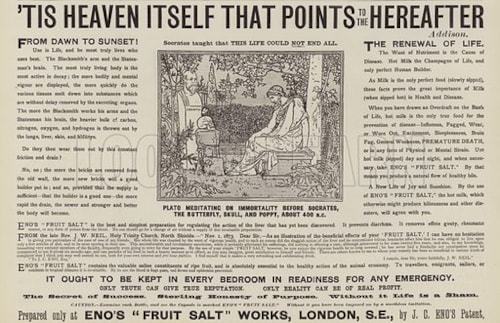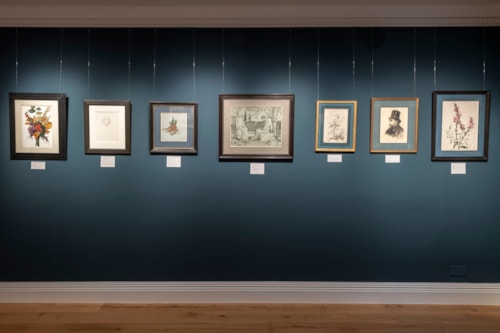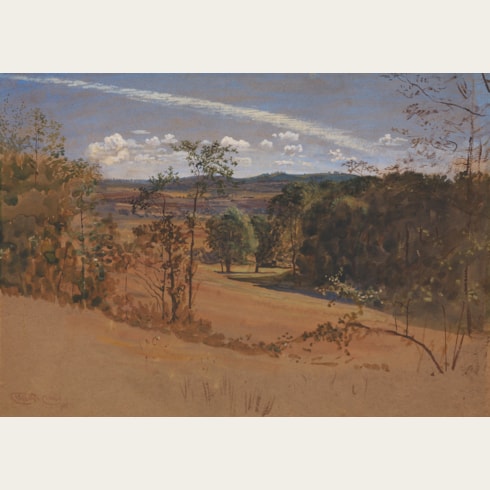Walter CRANE
(Liverpool 1845 - Horsham 1915)
Plato Meditating Before the Grave of his Teacher, Socrates
Sold
Pen and brush and grey ink and grey wash, heightened with white, within a fictive mount drawn on thick blue-green paper, with the drystamp TURNBULLS CRAYON BOARD at the lower left.
Signed with a monogram and dated CVV [with a crane] / 84 in grey ink at the lower right.
Numbered or dated 5/12 1893 on the verso.
460 x 358 mm. (18 1/8 x 14 1/8 in.) [image]
513 x 710 mm. (20 1/4 x 27 7/8 in.) [sheet]
Signed with a monogram and dated CVV [with a crane] / 84 in grey ink at the lower right.
Numbered or dated 5/12 1893 on the verso.
460 x 358 mm. (18 1/8 x 14 1/8 in.) [image]
513 x 710 mm. (20 1/4 x 27 7/8 in.) [sheet]
The present sheet is a study for a wood engraving of 1889, which also appeared as an illustration in an advertisement for the effervescent compound Eno’s ‘Fruit Salt’ in The Graphic of 3 February 1894, captioned ‘Socrates Meditating on Immortality before Socrates, the Butterfly, Skull, and Poppy, about 400 B.C.’. A similar advertisement for the same product that appeared in 1892 likewise used the same illustration.
The Classical Greek philosopher Plato (424/423-348/347 BC) was a pupil of the Athenian Socrates (470-399 BC), the founder of Western philosophy.
The initial suggestion that the present sheet, previously unattributed, is the work of Walter Crane is due to Keith Oehmig.
The Classical Greek philosopher Plato (424/423-348/347 BC) was a pupil of the Athenian Socrates (470-399 BC), the founder of Western philosophy.
The initial suggestion that the present sheet, previously unattributed, is the work of Walter Crane is due to Keith Oehmig.
A painter, draughtsman, illustrator and poet who was one of the most significant figures of modern decorative art, Walter Crane was the son of a portraitist and miniature-painter in Liverpool. Settling in London in 1857, he came into contact with the works of the Pre-Raphaelites and the writings of John Ruskin, and began working as an apprentice in the studio of the wood-engraver William James Linton between 1859 and 1862. In 1862 he exhibited a painting of The Lady of Shalott at the Royal Academy, to critical acclaim. Later submissions to the Academy were rejected, however, and Crane chose instead to exhibit at the Grosvenor Gallery. In the early 1870s Crane spent some time in Italy, where he befriended the landscape painter Giovanni Costa, whose influence is evident in Crane’s own landscape style. Strongly influenced by Japanese colour prints, Crane worked as an illustrator of children’s books between 1864 and 1875, and it is as a book illustrator – particularly of fairy tales, of which several books were published each year – that he was best known, not only in England but also in Germany and elsewhere. Crane exhibited his paintings at the Grosvenor Gallery and the New Gallery, and was elected a member of the Institute of Painters in Water Colours and the Royal Watercolour Society. He was a founder member of the Arts and Crafts Exhibition Society in 1888 and was elected a master of the Art Worker’s Guild in 1888 and 1889, producing ceramics, designs for wallpapers, stained-glass and other decorative pieces. He also produced a number of designs for large-scale murals and mosaics for public buildings, although some of these never came to fruition. He worked with William Morris on books published by Morris’s Kelmscott Press, and taught at the Manchester School of Art, Reading College and the Royal College of Art. One of his final significant projects were the four lunette decorations above the staircase of the Royal West of England Academy in Bristol, painted in 1913.

